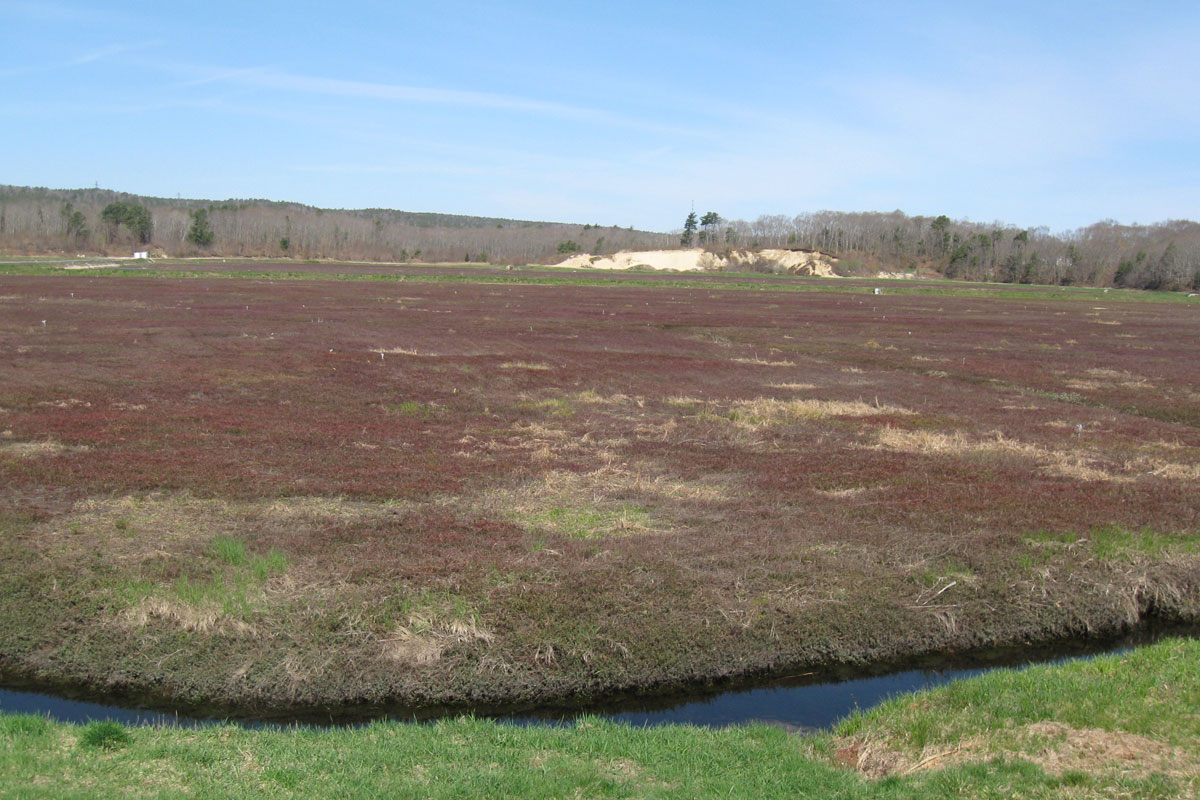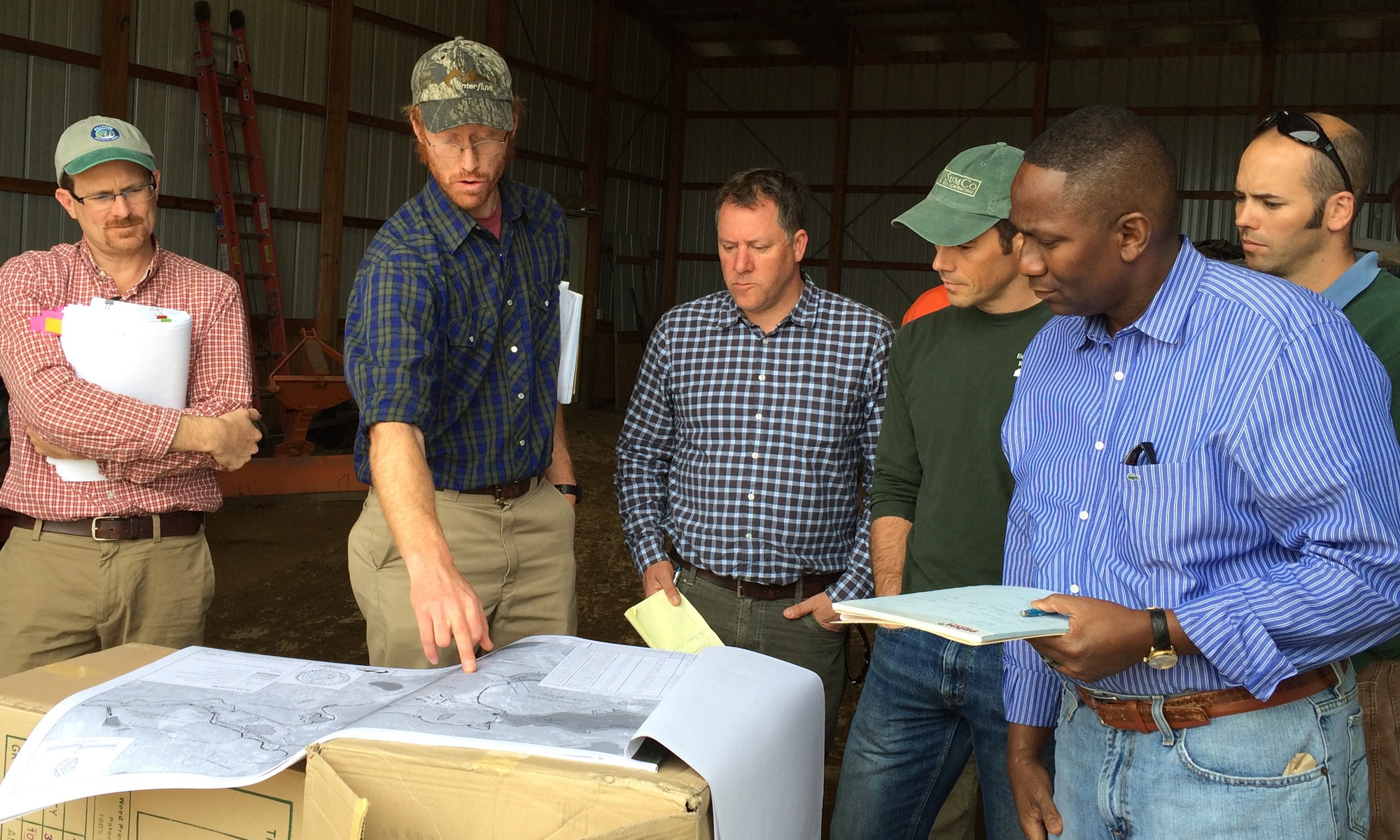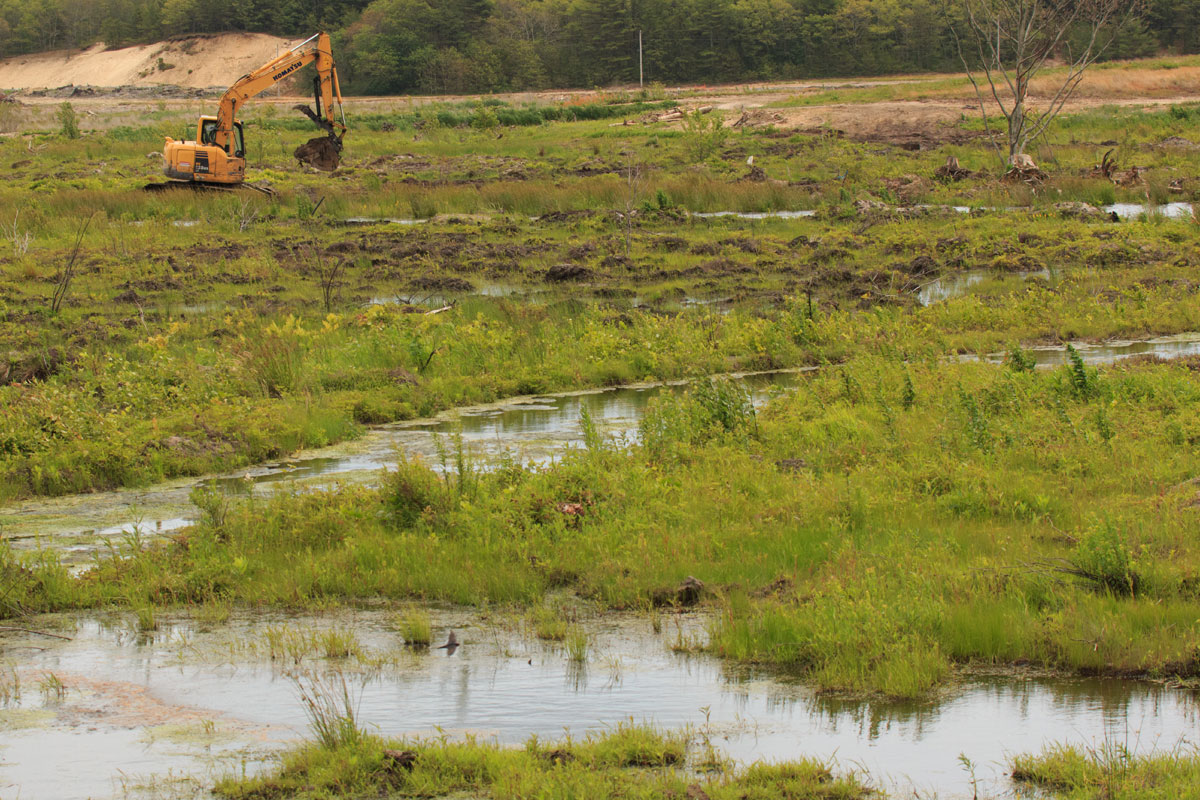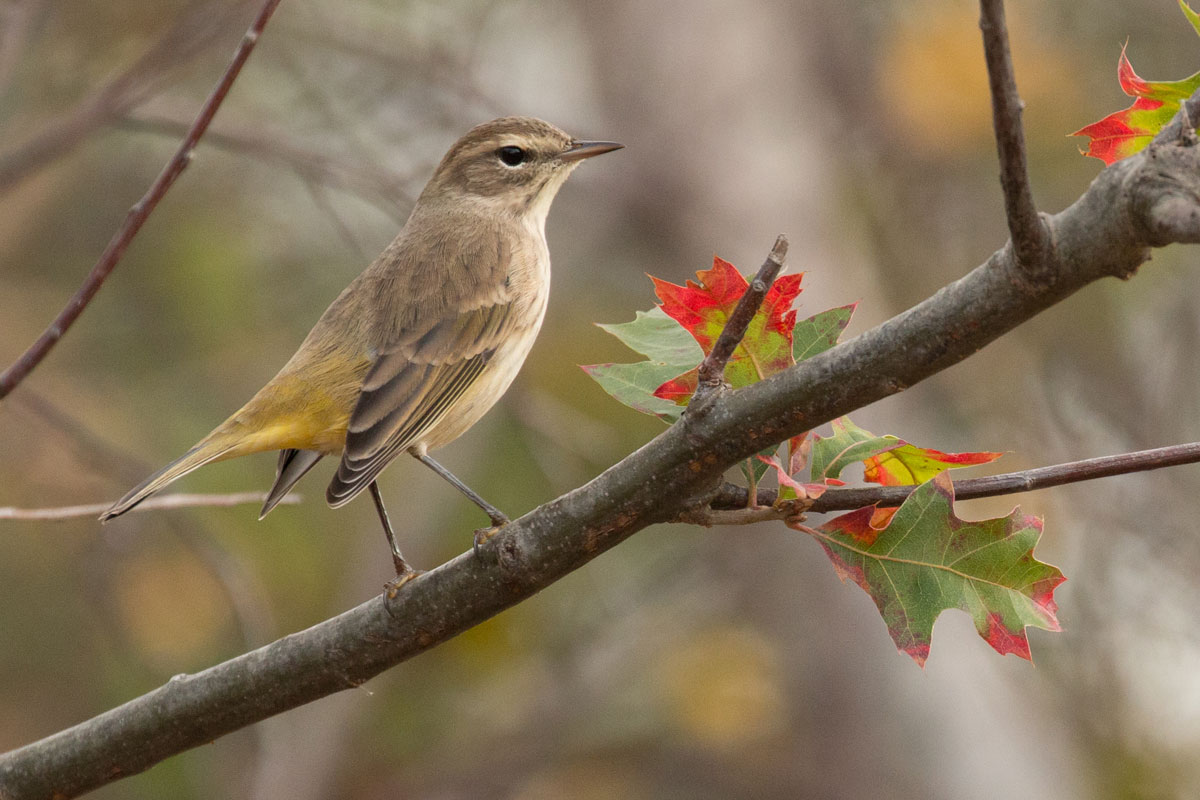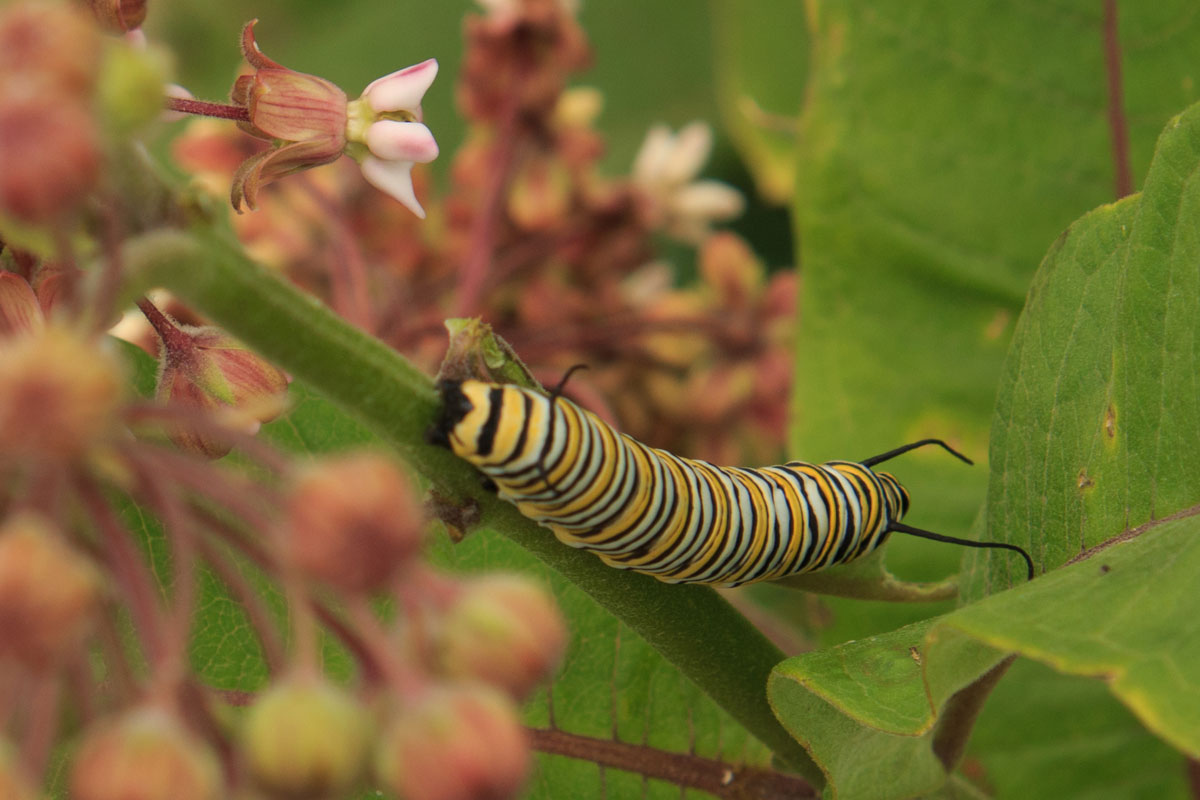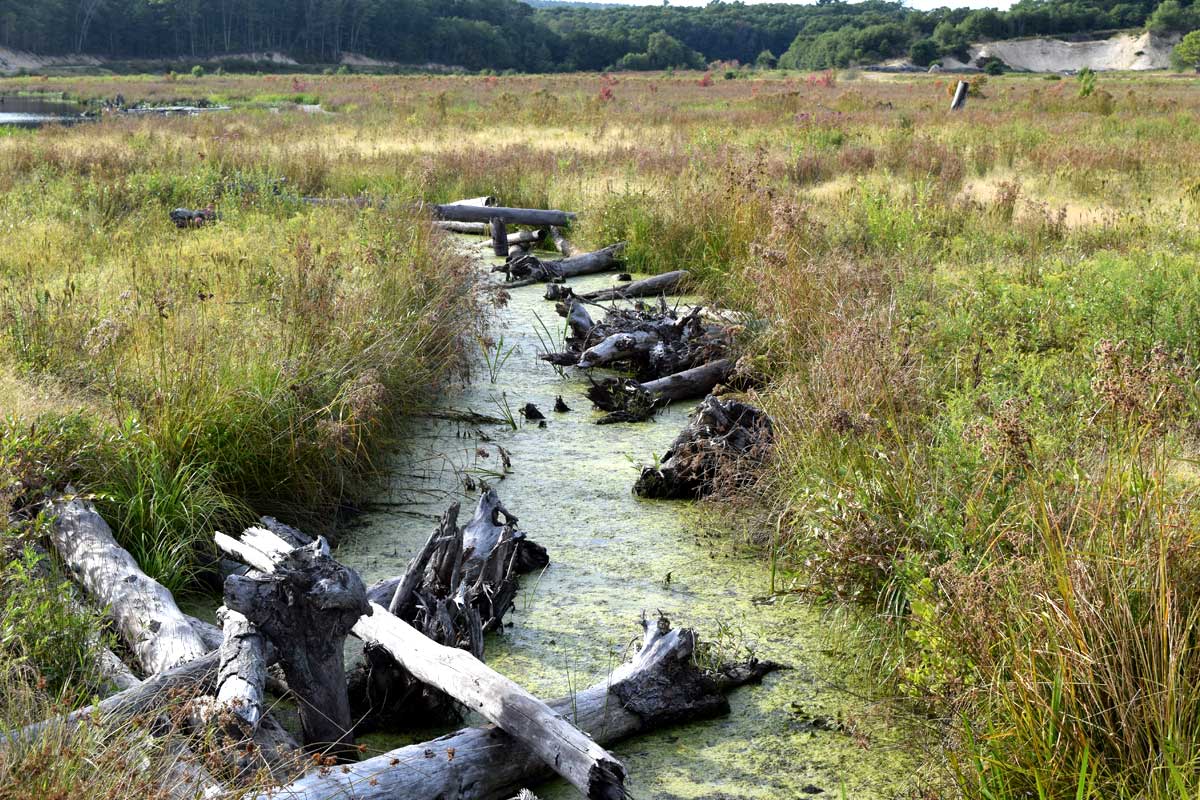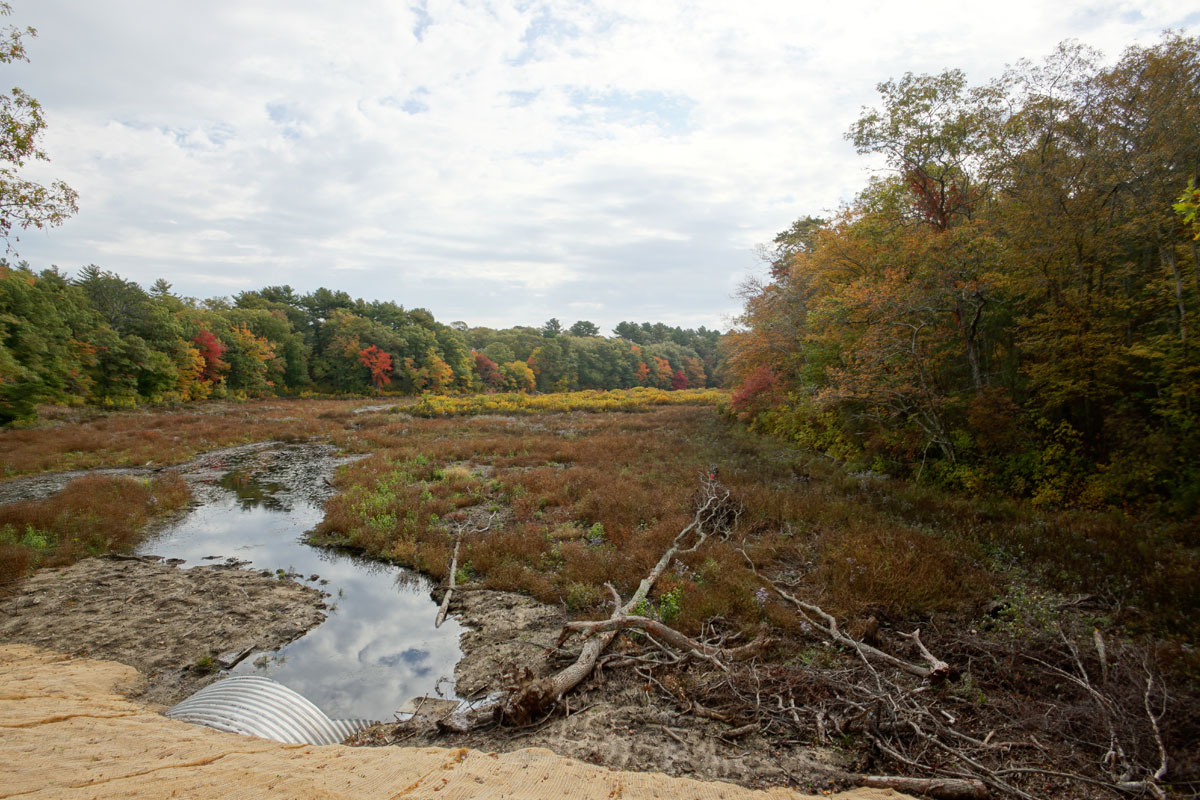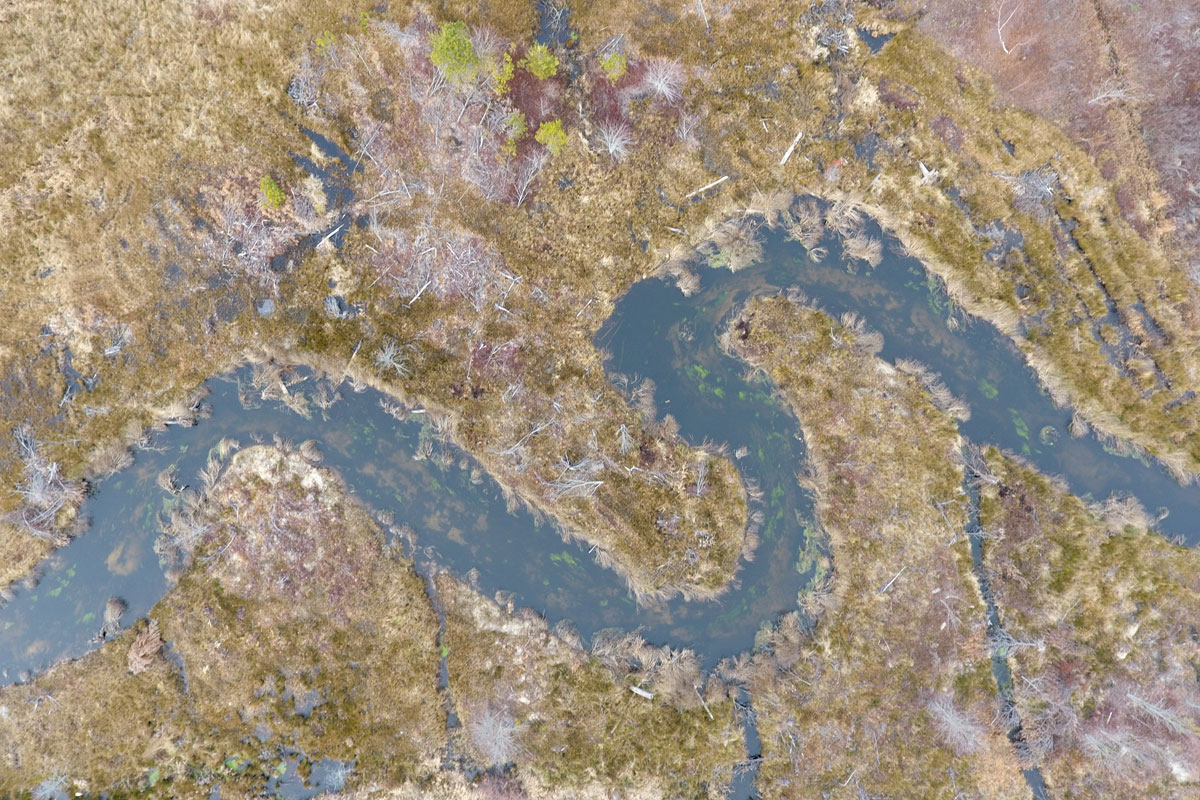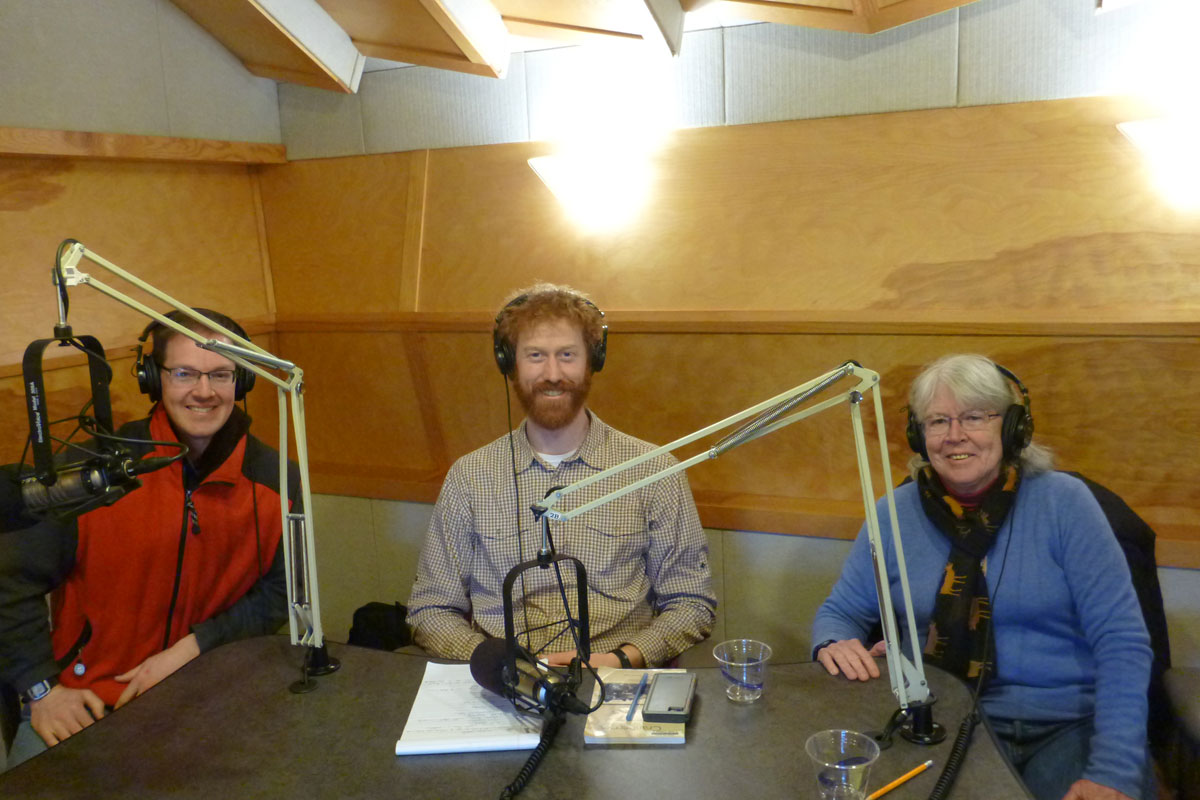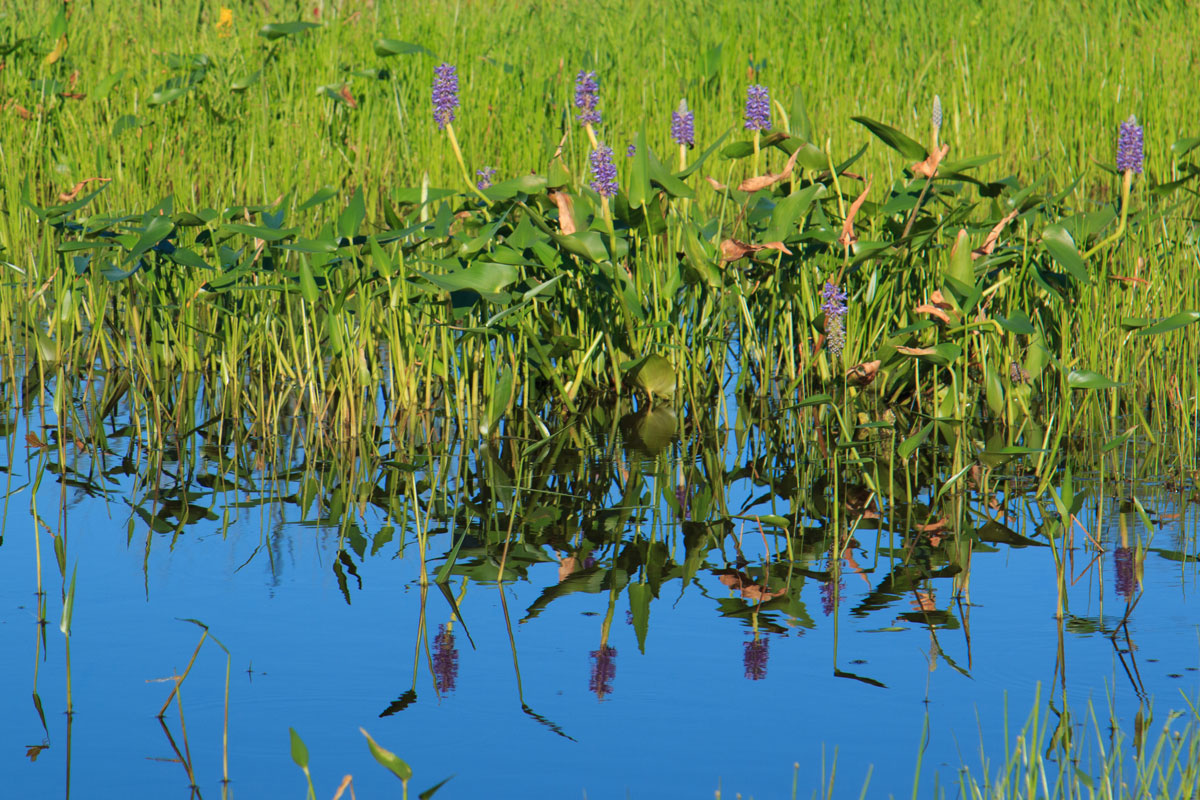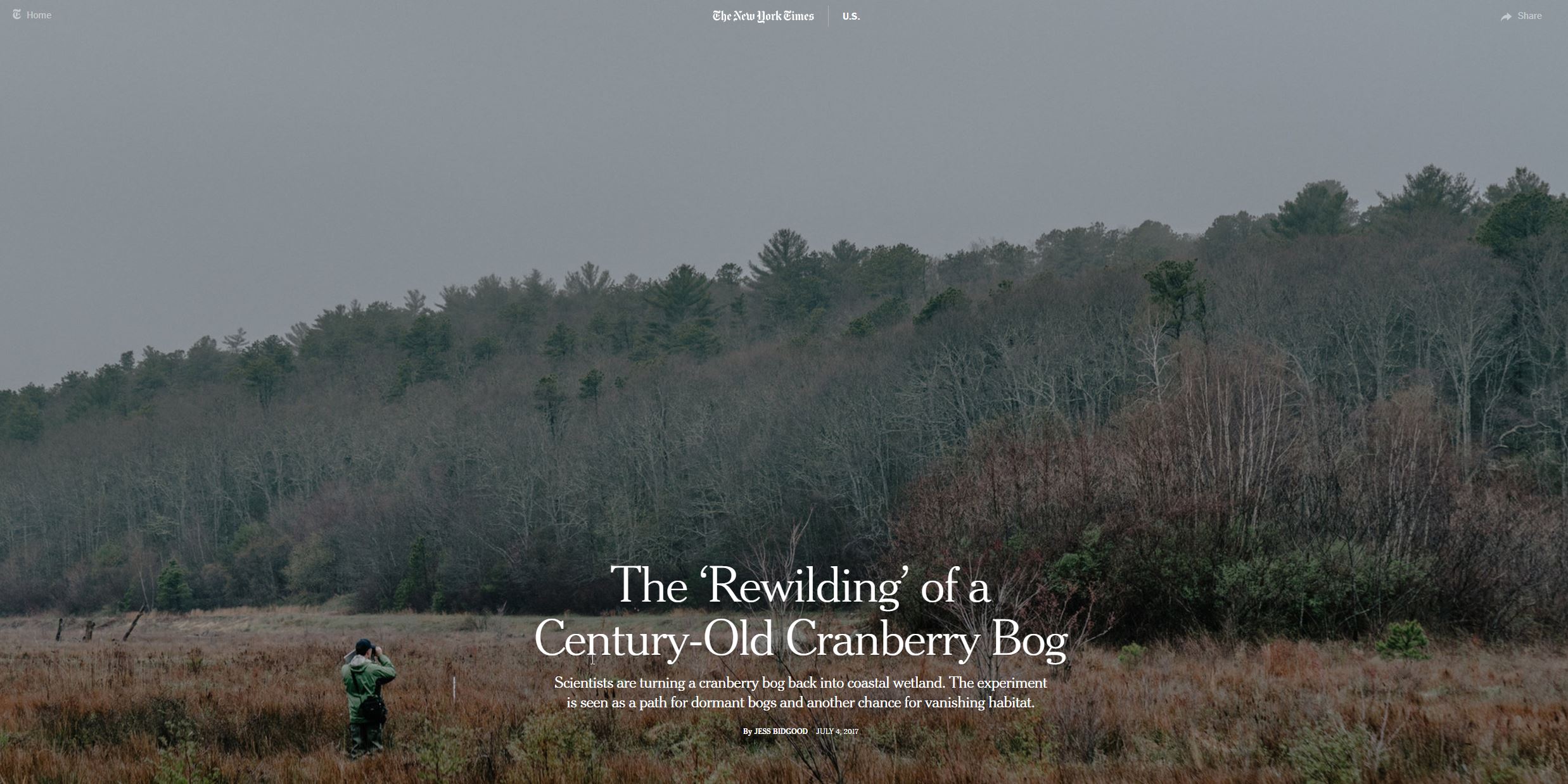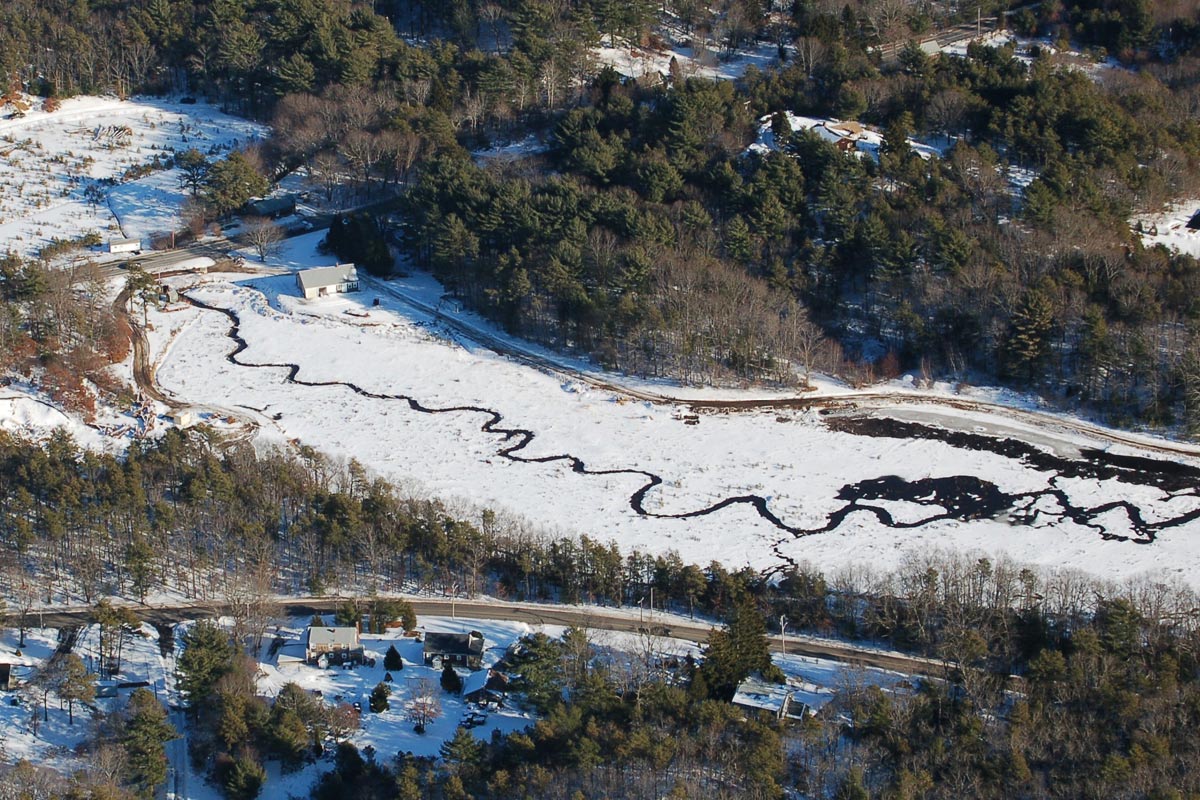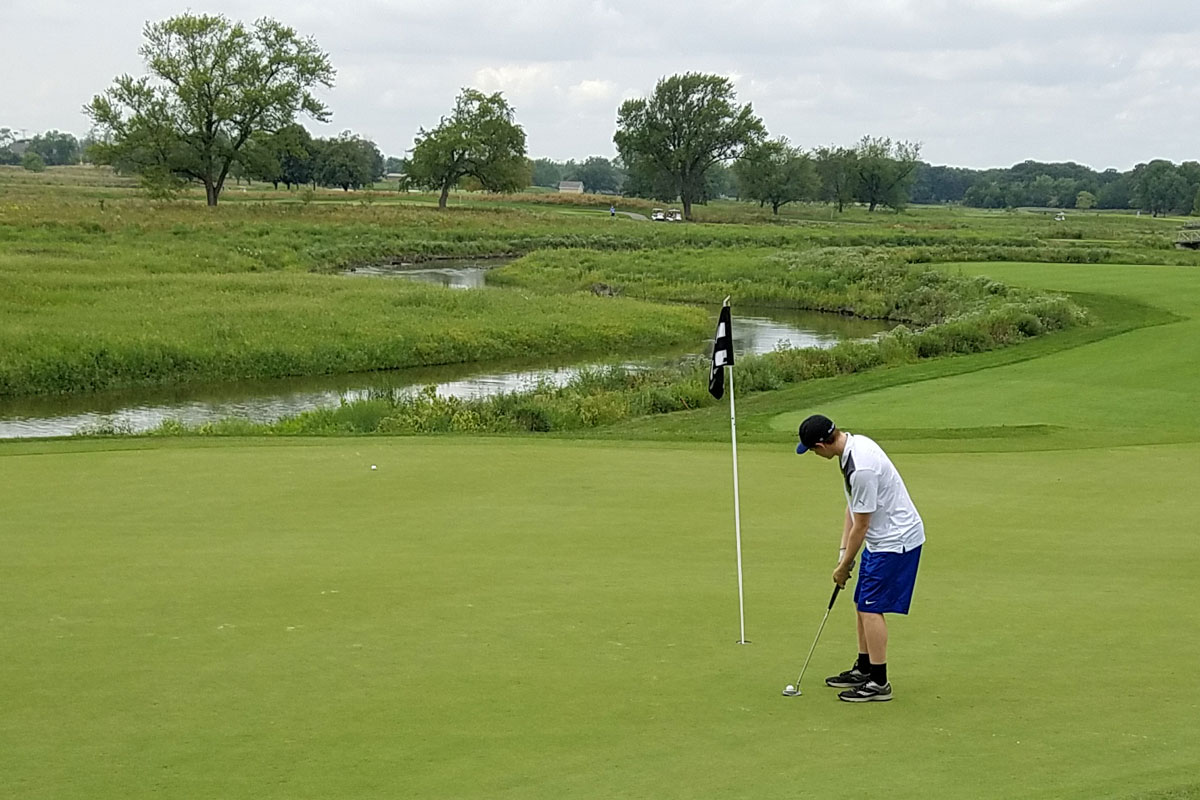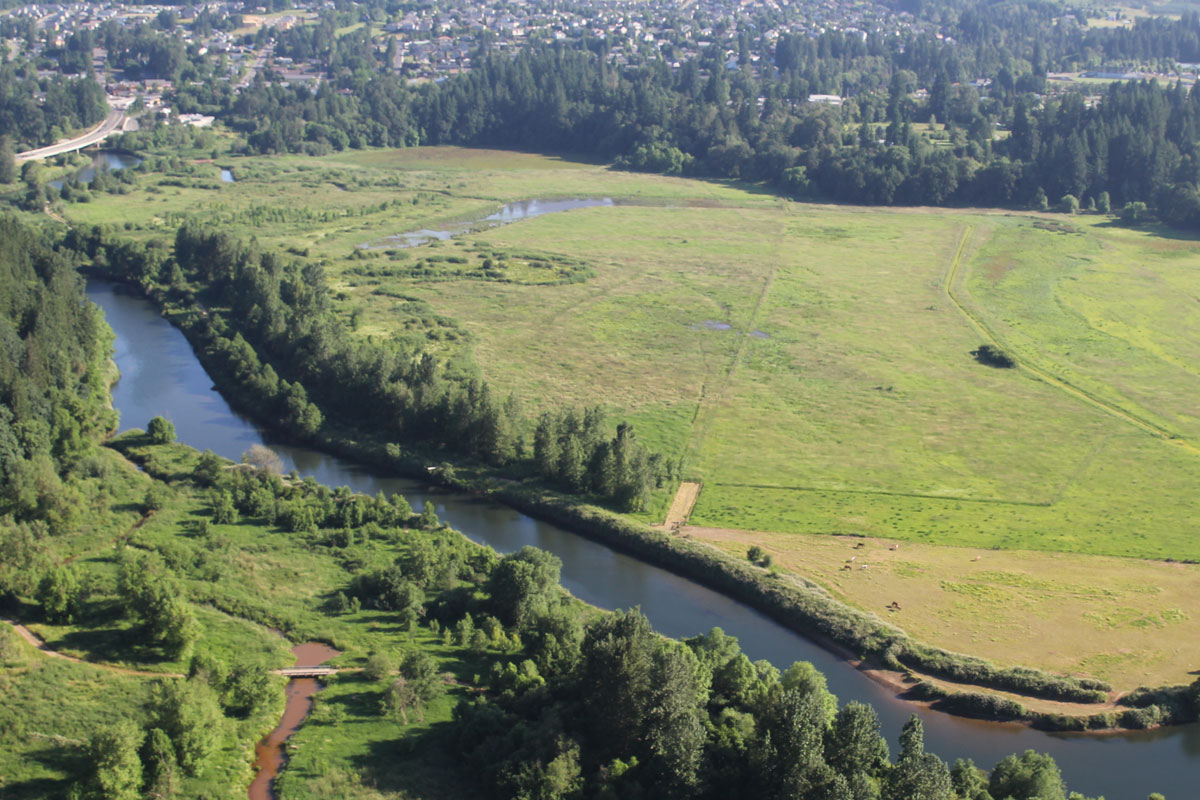Tidmarsh Farms River & Wetland Restoration, Massachusetts
Between the late 19th century and early 20th century, this 250-acre project site was purchased and cut, dredged, and divided into cranberry bogs; streams that once meandered were straightened; and an earthen dam was constructed to hold water. The land was then farmed for cranberries, which laid 1.5 to 2 feet of sand on top of the native peat through the years of active farming and used extensive pesticides and fertilizers. All of these landscape manipulations resulted in lost wetlands and a loss in stream and wetland function.
The project involved removing the dams and flow control structures, building a sinuous stream channel, placing more than 3000 pieces of large wood for habitat, roughening the bog surface for increased habitat complexity, replacing an undersized culvert, and building a wildlife-friendly bridge.
2018 Silver Award from the American Council of Engineering Companies (ACEC) Massachusetts
Listen to Inter-Fluve’s Nick Nelson and others discuss aquatic restoration projects on Cape Cod and how these projects will contribute to coastal resiliency and habitat diversity. The program aired on the NPR station for the Cape, Coast & Islands (WCAI).
In addition to the restoration of red maple swamp, fen and sand plains, over 20,000 Atlantic white cedar tree seeds were collected, propagated and later transplanted as part of a goal to establish only plants indigenous to southeastern Massachusetts and the Tidmarsh site itself. Photo: Mass Audubon.
